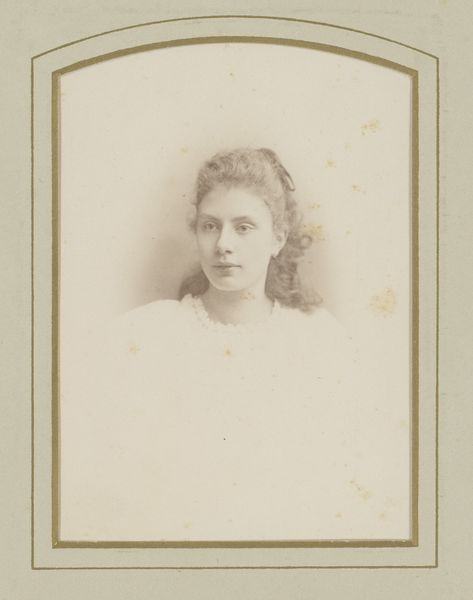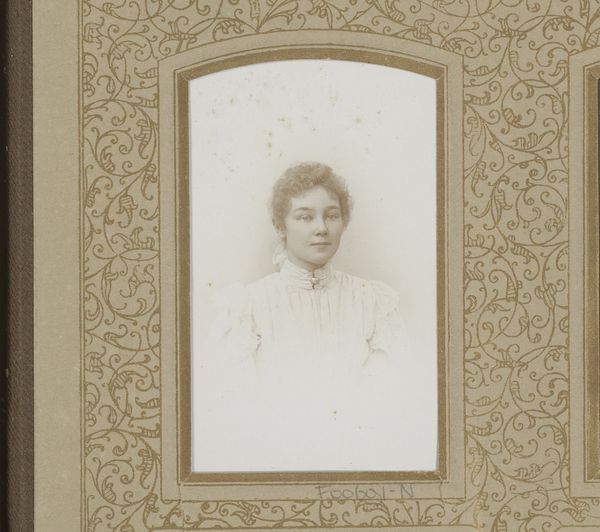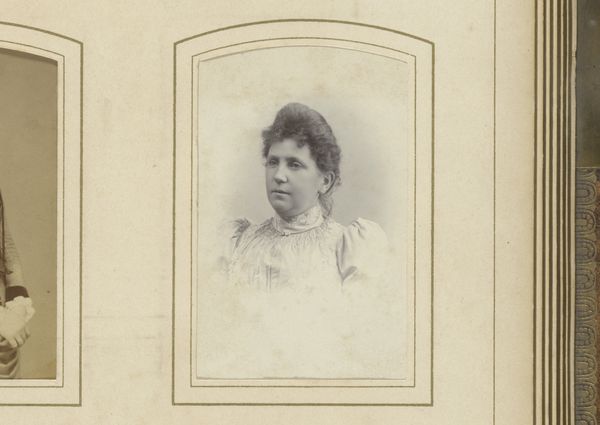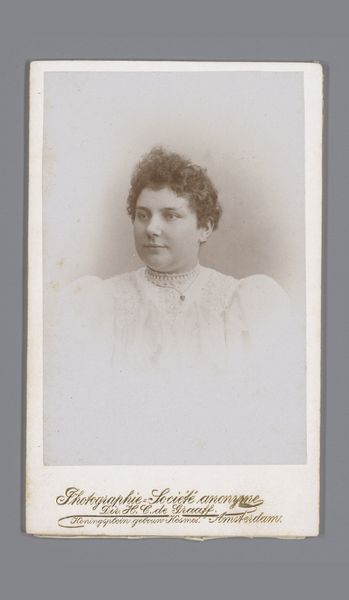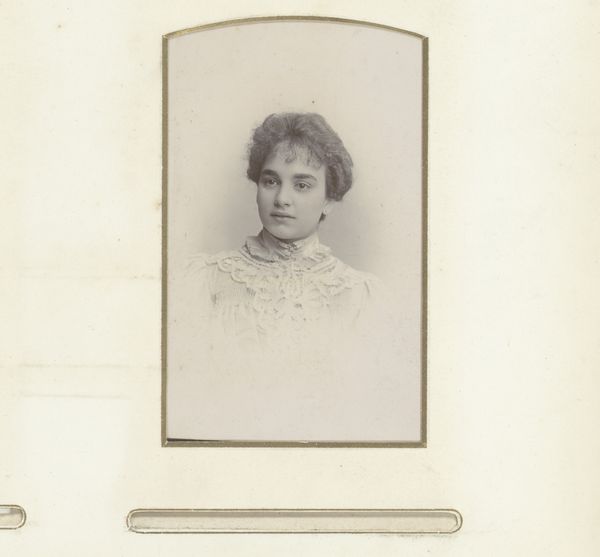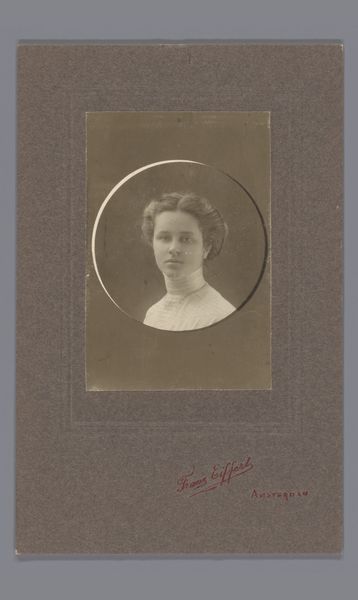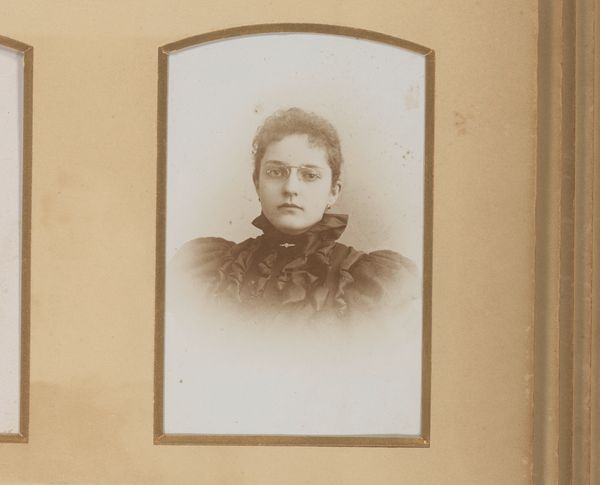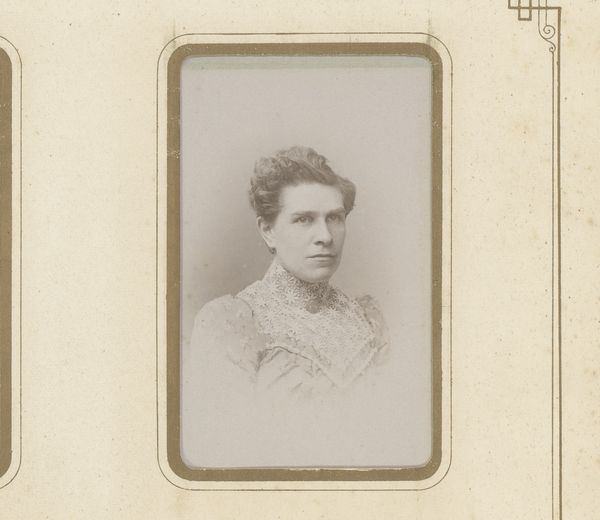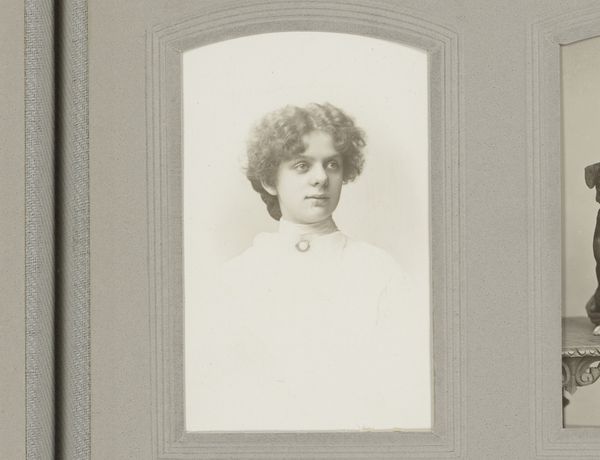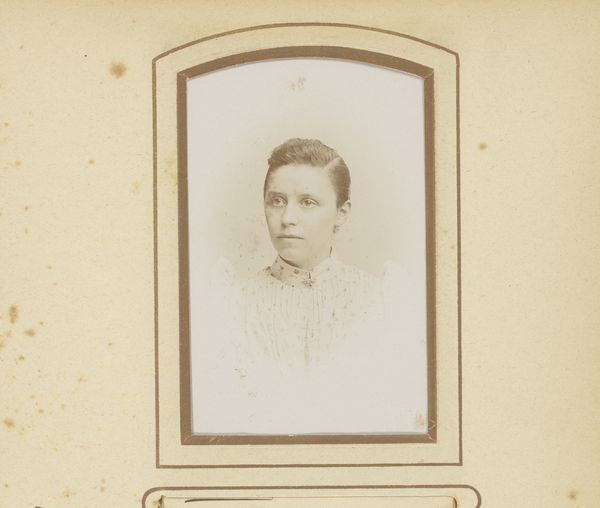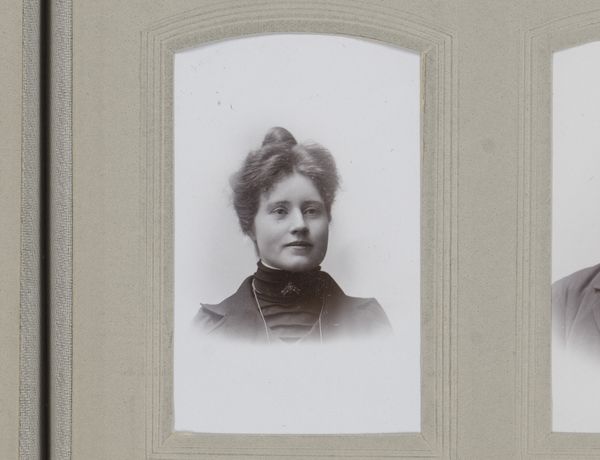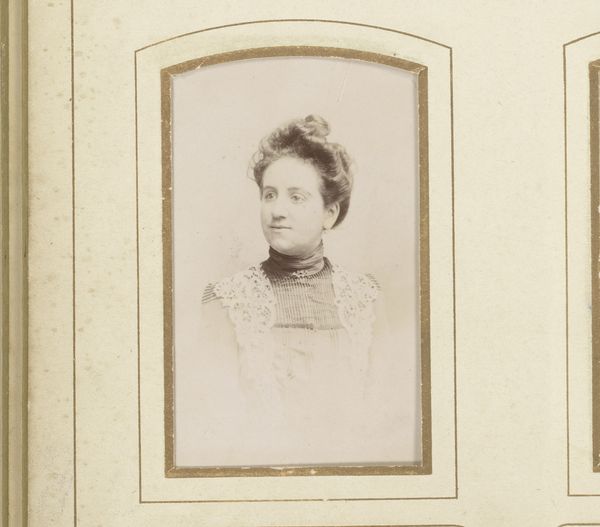
photography
#
portrait
#
self-portrait
#
pictorialism
#
photography
Dimensions: height 83 mm, width 51 mm
Copyright: Rijks Museum: Open Domain
Curator: Let’s take a look at "Portret van een vrouw in hooggesloten jurk," or "Portrait of a woman in a high-necked dress." This photographic portrait, dating from between 1880 and 1920, offers a glimpse into the late 19th-century aesthetic. Editor: My first impression is a sense of delicate stillness. The soft focus and limited tonal range give it a dreamlike quality, almost ethereal. I’m curious about the photographic process used to achieve such a hazy effect. Curator: The style here strongly suggests Pictorialism, a movement where photographers aimed to elevate photography to the status of art. Techniques like soft focus and elaborate printing processes were key to distancing the photograph from simple documentation. Editor: So, manipulating the materials to soften the "mechanical" nature of the photographic process, interesting! The focus on costume—the high-necked dress itself—also says a lot about social constraints. Curator: Precisely! These portraits were about crafting an image, projecting a specific identity sanctioned by societal norms. It speaks to how women navigated those roles. The woman’s steady gaze and formal attire were a product of her time, but in a pictorialist studio environment. Editor: Considering it's a photographic print, what materiality does it convey? Perhaps the creamy tones are achieved through specific developing agents? And what kind of labor was involved in preparing these photographs? I bet this high-collared white dress was not something made by herself. Curator: That’s very astute, given its age; albumen prints were prevalent then. I imagine considerable resources for wardrobe and processing went into the endeavor. Beyond posing and exposure, there was darkroom alchemy transforming light and chemicals into a durable object carrying socio-cultural meaning. Editor: That transformation from fleeting light to a lasting object is powerful. Thinking about the layers of social, economic, and material inputs makes the image all the more resonant. I'm still so stuck by how labor intensive the work was... It goes beyond "point and shoot"! Curator: Agreed, and seeing photography understood through these historical and material dimensions only enriches its impact. The art is not just about what’s in the picture; it's about everything it took to produce it, culturally and physically.
Comments
No comments
Be the first to comment and join the conversation on the ultimate creative platform.
